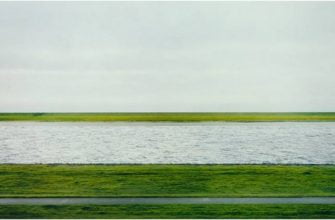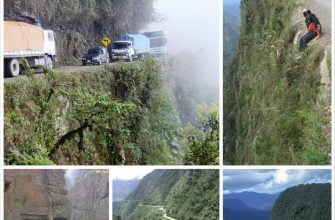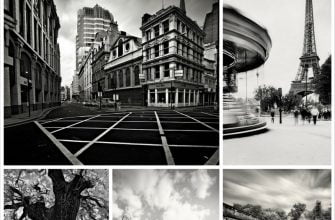Milieuvervuiling. Je kan er over mekkeren, maar je kan er ook mooie foto’s van maken





An Indian boy searches for coins in the polluted waters of the Yamuna River in New Delhi.The national capital is a major culprit in the pollution of the Yamuna, accounting for about 79 per cent of the total waste water that is poured into the river by the major towns along its banks. Despite the Indian government spending millions on trying to clean up the river, most of it going to waste-treatment stations, pollution levels continue to rise. AFP PHOTO/ Manan VATSYAYANA
Индийский мальчик ищет монеты в загрязненных водах Реки Ямуны в Нью-Дели. Национальный капитал — главный преступник в загрязнении Ямуны, составляя приблизительно 79 процентов полных сточных вод, которые льют в реку главные города вдоль ее банков. Несмотря на индийское правительство, тратящее миллионы на попытку убрать вверх по реке, большинство из этого идущий в станции ненужной обработки, уровни загрязнения продолжают повышаться. ФОТОГРАФИЯ AFP / Manan VATSYAYANA

A man collecting dead fish in Guanqiao Lake in Wuhan in central China’s Hubei province, which died due to the polluted lake water and the sizzling weather in the city. EPA/ZHOU CHAO
Человек, забирающий мертвую рыбу в Озере Guanqiao в Ухани в области Хубэя центрального Китая, которая умерла из-за загрязненной воды озера и испепеляющей погоды в городе. EPA/ZHOU CHAO

This Australian Sailing Team handout photo taken on June 24, 2008 shows the Australian Men’s 470 class team of Nathan Wilmot and Malcolm Page on their boat ‘Dead Calm’ training on a bed of algae at the Olympic sailing venue at Qingdao in China. China’s pledge of a «Green Olympics» has taken on a worrying meaning at the sailing-venue city of Qingdao, where an algae bloom has coated the coastline, according to witnesses and Chinese media. A bright green covering of algae was seen on June 27 smothering beaches and extending out several hundred metres (yards) into the Yellow Sea off the city, about 550 kilometres (340 miles) southeast of Beijing. AFP

Chinese Peoples Liberation Army (PLA) soldiers remove algae from a beach near the Olympic Sailing Centre in the city of Qingdao on July 5, 2008. Olympic sailors are not normally afraid of the water, but athletes and coaches say the pollution at the Olympic sailing course in Qingdao makes them very wary of getting wet. The bright green algae that has choked parts of the Olympic course has drawn an unwelcome spotlight on China’s environmental record and prompted an ongoing cleanup effort by more than 10,000 people, backed by boats, bulldozers and the military. AFP PHOTO/Mark RALSTON
Китайская Освободительная армия Народов (НАРОДНО-ОСВОБОДИТЕЛЬНАЯ АРМИЯ) солдаты удаляет морские водоросли из берега около Олимпийского Парусного Центра в городе Циндао 5 июля 2008. Олимпийские моряки обычно не боятся воды, но атлеты и тренеры говорят, что загрязнение в Олимпийском парусном курсе в Циндао делает их очень опасающийся промокания. Яркие зеленые морские водоросли, который забил части Олимпийского курса, потянули неприятный центр внимания на экологическом отчете Китая и вызвали продолжающееся усилие по уборке больше чем 10 000 человек, поддержанных лодками, бульдозерами и вооруженными силами. ФОТОГРАФИЯ/МАРКА AFP RALSTON

View of a graffiti of a woman reading a book in the walls surrounding the Mapocho river in Santiago. The Mapocho river, at present gravely polluted, is being cleansed through an innovative project which includes a 28,5 km long underground tunnel where the sewage will be re-directed. AFP PHOTO/Claudio Santana
Представление надписей на стенах женщины, читающей книгу в стенах, окружающих реку Mapocho в Сантьяго. Реку Mapocho, в настоящее время серьезно загрязненную, чистят через инновационный проект, который включает подземный туннель 28,5 км длиной, где сточные воды будут перенаправлены. AFP PHOTO/Claudio Santana

Dead fishes in the Pineios river outside Larissa, central Greece. Experts took water and fish samples away for testing. EPA/VASILIKI PASCHALI
Мертвые рыбы в реке Pineios вне Ларисы, центральная Греция. Эксперты убрали воду и образцы рыбы для того, чтобы проверить. EPA/VASILIKI PASCHALI

A polluted creek covered with trash in Manila, Philippines on 01 March 2009. The Department of Environment and Natural Resources reported in 2008 that the Philippines hosts 50 major polluted rivers, with a majority of pollutants coming from domestic waste. EPA/FRANCIS R. MALASIG
Загрязненный ручей, покрытый хламом в Маниле, Филиппины 01 марта 2009. В 2008 Министерство по вопросам охраны окружающей среды и Природные ресурсы сообщили, что Филиппины принимают 50 главных загрязненных рек, с большинством загрязнителей, прибывающих из внутренней траты. EPA/FRANCIS R. MALASIG

Thousands of scrapped taxis are abandoned at a yard in the center of Chongqing city on March 4, 2009. Traffic congestion and pollution have worsened dramatically in Chinese cities as the country’s long-running economic expansion has allowed increasing numbers of consumers to make big-ticket purchases such as cars. AFP PHOTO
Тысячи такси оставлены в самом центре города Chongqing 4 марта 2009. Пробка на дороге и загрязнение ухудшились резко в китайских городах, поскольку продолжительный подъем экономики страны позволил увеличивать числа потребителей, чтобы сделать стоящие немалых денег покупки, такие как автомобили. ФОТОГРАФИЯ AFP

Indian scavengers look for coins and other valuable items from among the offerings of devotees in the Ganges at Varanasi on April 5, 2009. More than 400 million people live along the Ganges River. An estimated 2,000,000 persons ritually bathe daily in the river, which is considered holy by Hindus. In the Hindu religion it is said to flow from the lotus feet of Vishnu (for Vaisnava devotees) or the hair of Shiva (for Saivites). While the Ganges may be considered holy, there are some problems associated with the ecology. It is filled with chemical wastes, sewage and even the remains of human and animal corpses which carry major health risks by either direct bathing in the water (e.g.: Bilharziasis infection), or by drinking (the Fecal-oral route). AFP PHOTO/Prakash SINGH

A Chinese woman and her child walk along a street during a sandstorm in Lanzhou, north China’s Gansu province on April 23, 2009. Air pollution in China’s cities remains very serious, state media quoted a minister as saying, amid an ongoing battle to clean up the skies in the world’s largest coal-consuming nation. AFP PHOTO
Китайская женщина и ее ребенок идут по улице во время песчаной бури в Ланьчжоу, область Gansu северного Китая 23 апреля 2009. Загрязнение воздуха в городах Китая остается очень серьезным, государственные средства информации процитировали министра, среди продолжающегося сражения, чтобы очистить воздух у самой большой в мире угольной нации. ФОТОГРАФИЯ AFP
Kosovo albanians work at an open coal mine near the town of Obilic on April 24, 2009. Air pollution in Pristina has passed all legal norms of environmental pollution regulations. While in the world’s developed countries air pollution is permitted to pass its limits only 18 times during a year, Pristina reaches this limit within three months. Experts at the Institute for Public Health warn that this pollution factor is decreasing people?s life expectancy. AFP PHOTO/ARMEND NIMANI

Volunteers try to clear a dam which is filled with discarded plastic bottles and other garbage, blocking Vacha Dam, near the town of Krichim on April 25, 2009. AFP PHOTO / DIMITAR DILKOFF

Volunteers try to clear a dam which is filled with discarded plastic bottles and other garbage, blocking Vacha Dam, near the town of Krichim on April 25, 2009. AFP PHOTO / DIMITAR DILKOFF
Brown coal power plant Boxberg with brown coal open cast mining.
Boxberg, Germany. Sipa.
A worker washing dead fish remains at a Meat and Bone Meal factory in Dhaka. MBM is animal feed manufactured from abattoir waste and animal carcasses. Following the BSE (Mad Cow Disease) crisis, meat and bone meal been illegal as animal feed in Europe since January 1st, 2001. This is not the case in Bangladesh where the practice is still widespread. SIPA
A cow grazing amidst the piles of rubbish in Dhaka. With over 8000 slums, thousands of people work everyday in the polluted environment of Bangladesh’s capital. The city is known to have the 2nd most polluted water supply in the world, contaminated by industrial waste and human excrement. The local authorities in Dhaka do not consider waste disposal a priority and as a result, rubbish accumulates in large piles around the city before it is finally removed. Brunopress








